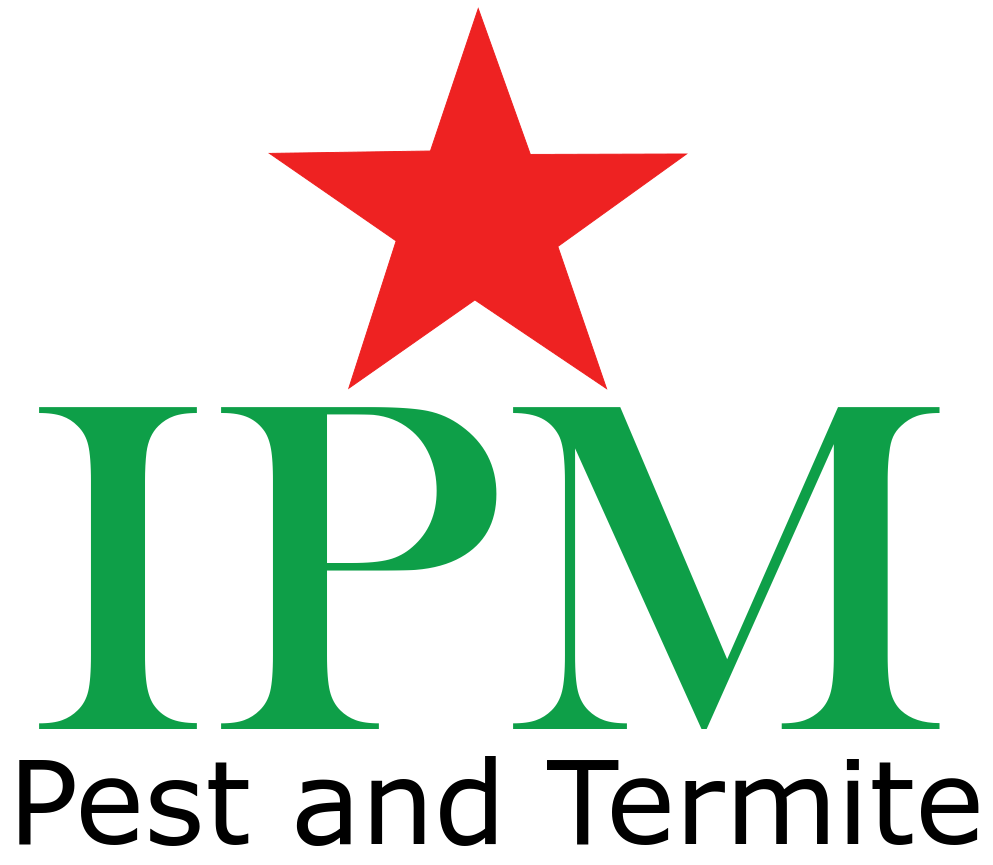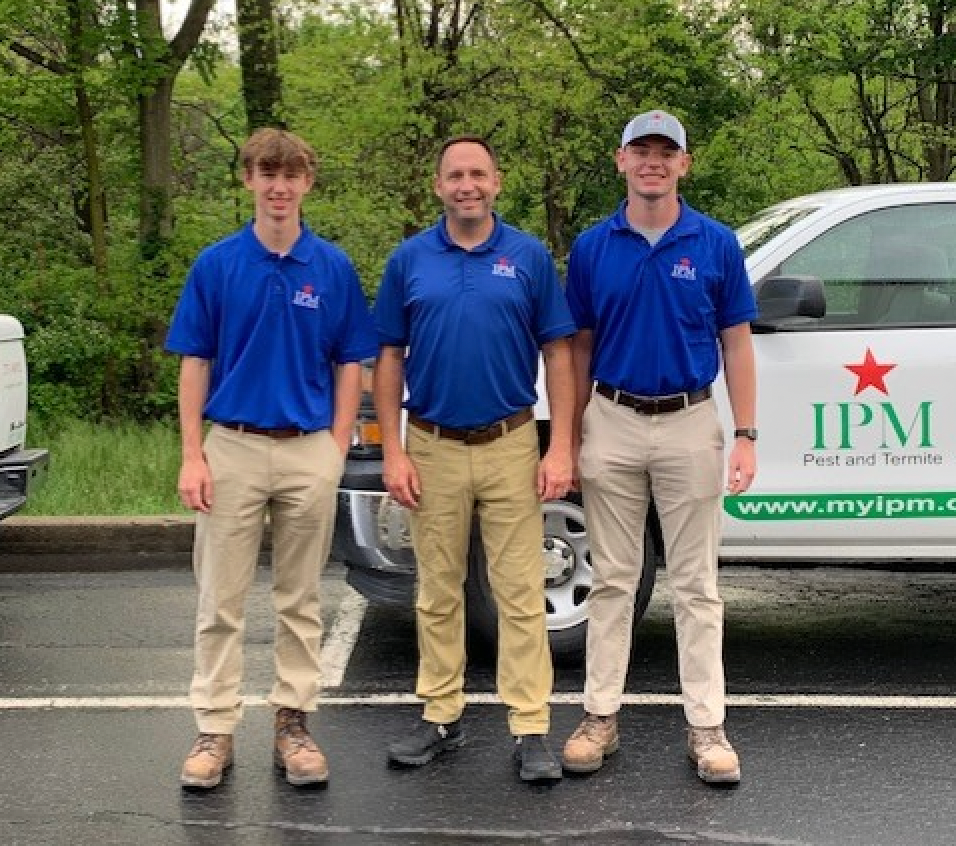Spiders
Pest Control for Spiders in Lexington & Louisville, KY & Surrounding Areas
Many species of spiders are common structural pests. Spiders are noticed mostly by the appearance of their webs within the structure; in the basement, crawl space, attic, and/or in the living areas. Spiders are beneficial in that they kill and eat insects. To kill insects all spiders have poisonous venom, however the black widow and brown recluse spiders are the only North American species consistently dangerous to humans. There are certainly other spiders whose bite can cause irritation; the yellow sack spider is one of the most common in the Kentucky area.
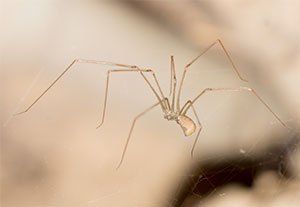
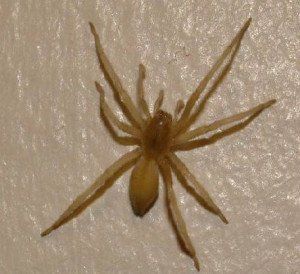
Yellow Sack Spider
The yellow sack spider is one of the most common spiders in Kentucky that is associated with spider bites in the home. These spiders search for food after dark by crawling around structures. These spiders do not use webs to capture prey and can forage large areas in a single night. They are called sack spiders due to their building a sack like resting area that they spend the day in. These sacks are usually found along the joint between the wall and ceiling of a room. If you poke at the sack the spider may come running out. These spiders can be easily treated with our general spider control methods.
Some spiders are found in cool/moist areas such as basements, and crawl spaces. Spiders require water to drink, but more importantly some insects are drawn to moist areas for water, reproduction, development, and/or a suitable place to live. These moist areas are primary sites for these spiders to catch their prey. Spiders are also found in warm/dry areas like subfloor air-vents, in upper corners of rooms or in attics. These spiders specialize in catching insects that are in dry areas, and the spiders obtain their water from eating the insects.
Different spiders have varying hunting techniques. Some spiders are web building, and capture their prey on webs. Other spiders hunt without webs, these spiders capture their prey by moving to a suitable area and then capturing insects by jumping, or grabbing them. Web building spiders are most often noticed by their webs and can be removed with a broom, vacuum or mop for temporary management.
Long term management can be achieved by sealing up cracks and crevices around the structure to prevent spiders from migrating in from outside. Spiders already present in the house may be removed or killed. Removal of spiders should also include their webs and egg sacs to prevent further infestations. The best way to remove spiders, webs, and egg sacs is with a vacuum or broom. More aggressive techniques may be needed to destroy spiders breeding in hard to reach areas. These techniques may include one or several of the following: dusting behind wall voids, dusting behind siding, dusting weep holes, spraying targeted areas with a residual chemical and spraying the exterior
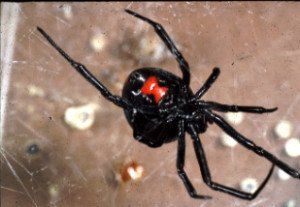
Black Widow
Black widow spider’s range includes most warm areas of the United States and the females can be identified by their black body with two red or yellow triangles (usually forming an hourglass shape) on the underside of the abdomen. Black widow spiders construct an irregular tangled web mass, the spider retreats to a central area until a prey item becomes entangled in the web. Webs are most frequently found under boards, stones, along foundation slabs, behind shrubs, and especially where brick or wood siding extends close to the ground.
Black widow venom contains neurotoxins, and can cause varying reactions depending on many factors including: where the person was bit, the persons size, how sensitive the person is to the poison, the amount of venom injected, temperature and other factors not listed here. The bite normally produces a pain similar to a needle stick and diminishes quickly. Symptoms range form a feeling of having a cold to convulsions and death. Anti-venom specific for black widow bites is available to most physicians.
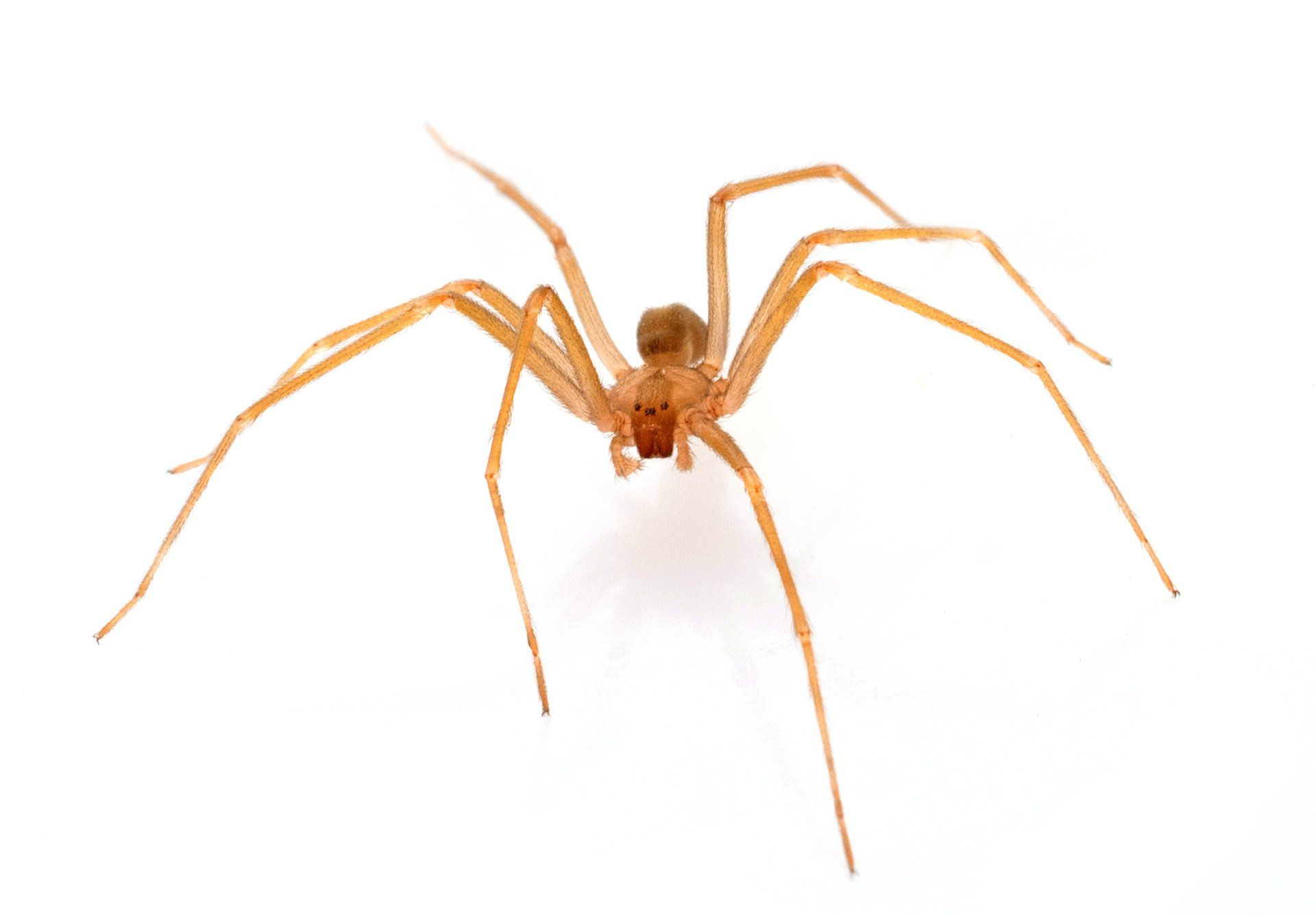
Brown Recluse
Brown recluse spiders are secretive, and are found in all types of structures. This spider’s range includes the southern, western, and mid-western United States. It has become more of a problem in Kentucky over the past few years. Brown recluse are found in bathrooms, bedrooms, closets, garages, basements, cellars, dropped ceilings, duct-work registers, attics and other areas of a structure that may not be used often. The web is nondescript and found under or within undisturbed items. The spider itself is timid and will run if disturbed. Most bites occur when stored cloth items are put on without shaking or washing first, or by rolling over the spider while asleep in bed.
The body of the brown recluse is yellow to dark brown and some species have a distinct dark brown violin-shaped mark on the top of the cephalothorax or area containing the legs and head. Another distinctive characteristic of this spider is that it only has six eyes arranged in pairs.
Brown recluse venom contains cytotoxens causing necrosis (tissue death) which may cause large ulcerating sores. Reaction to a brown recluse bite may vary depending on the individuals sensitivity. Usually the effects of a brown recluse bite are only in the area of the bite, however in some cases (mostly children or people that were bit multiple times) a systemic reaction may occur. Bites are usually painless, however a localized burning sensation may develop and last 30 to 60 minutes. During the next 1 to 8 hours the area will become increasingly reddened and a pus-filled blister forms in the center. Bacterial infections commonly increase the damage caused by this bite and it is important to see a doctor if you suspect that you have received a brown recluse bite.
While IPM Pest & Termite does not service for brown recluse spiders, we do service for wolf spiders and grass spiders, which are commonly misidentified as brown recluse spiders. When in doubt, give us a call for a consultation!
